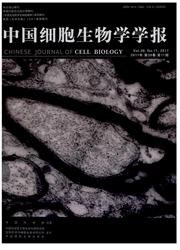

 中文摘要:
中文摘要:
气道平滑肌细胞(airway smooth muscle cells,ASMCs)是引起哮喘患者气道收缩狭窄、呼吸阻力增加的主要效应细胞。ASMCs收缩效应检测是研究哮喘病理生理机制、评估或研发新的支气管舒张药物的重要实验依据。而常用的活体组织张力检测以及单层培养ASMCs显微镜形态观察等方法存在样品取材或测量误差等问题。该研究利用胶原蛋白凝胶构建气道平滑肌细胞的三维立体培养模型,将凝胶与培养孔壁分离,在不同的时间点记录细胞收缩力作用下凝胶面积的变化值,以此反映ASMCs的收缩效应。结果显示,0.1,1,10 mmol/L的乙酰胆碱(acetylcholine,Ach)刺激后,凝胶面积均显著缩小,随着剂量增加ASMCs的收缩反应增强。提前加入肌球蛋白ATP酶抑制剂BDM(butanedione monoxime),能明显抑制Ach诱导的ASMCs收缩反应,说明该方法的可重复性和准确性好。
 英文摘要:
英文摘要:
Airway smooth muscle cells(ASMCs) have been regarded as the main effector cells responsible for bronchoconstriction and increased respiratory resistance in asthma. The detections of the contractile responses of ASMCs provide important experimental evidences for investigation of the pathophysiological mechanisms of asthma, evaluation and development of new bronchodilator drugs. The routine studies to measure the tension changes of excised tissue and morphological changes of monolayer cultured ASMCs were frequently limited by the intermittent supply of viable samples and measurement error. In this study, we established a gel contraction assay, which employed 3-dimension cultured ASMCs in collagen I substrate. Collagen gels were released from the wells in which they were fabricated, and the decreases in gel surface area caused by cell shortening at different time points were recorded to estimate ASMCs contraction. The results showed that gel area decreased significantly to the stimuli of 0.1, 1, 10 mmol/L of acetylcholine(Ach) in a dose-dependent manner. However, myosin ATP inhibitor BDM(butanedione monoxime) could inhibit the Ach-induced contractile response of ASMCs, which demonstrated the high reproducibility and accuracy of this assay.
 同期刊论文项目
同期刊论文项目
 同项目期刊论文
同项目期刊论文
 Non-specific physiological background effects of acupuncture revealed by proteomic analysis in norma
Non-specific physiological background effects of acupuncture revealed by proteomic analysis in norma Clinical evaluation of stereotactic radiation therapy for recurrent or second primary mediastinal ly
Clinical evaluation of stereotactic radiation therapy for recurrent or second primary mediastinal ly Targeting pyruvate kinase M2 contributes to radiosensitivity of non-small cell lung cells in vitro a
Targeting pyruvate kinase M2 contributes to radiosensitivity of non-small cell lung cells in vitro a Gene expression profile of acupuncture in treating asthma and the anti-asthmatic effects of differen
Gene expression profile of acupuncture in treating asthma and the anti-asthmatic effects of differen Simultaneous application of BrdU and WST-1 measurements for detection of the proliferation and viabi
Simultaneous application of BrdU and WST-1 measurements for detection of the proliferation and viabi Recombinant rat CC10 protein inhibits PDGF-induced airway smooth muscle cells proliferation and migr
Recombinant rat CC10 protein inhibits PDGF-induced airway smooth muscle cells proliferation and migr Non-specific physiological background effects of acupuncture in normal rats revealed by proteomic an
Non-specific physiological background effects of acupuncture in normal rats revealed by proteomic an 期刊信息
期刊信息
